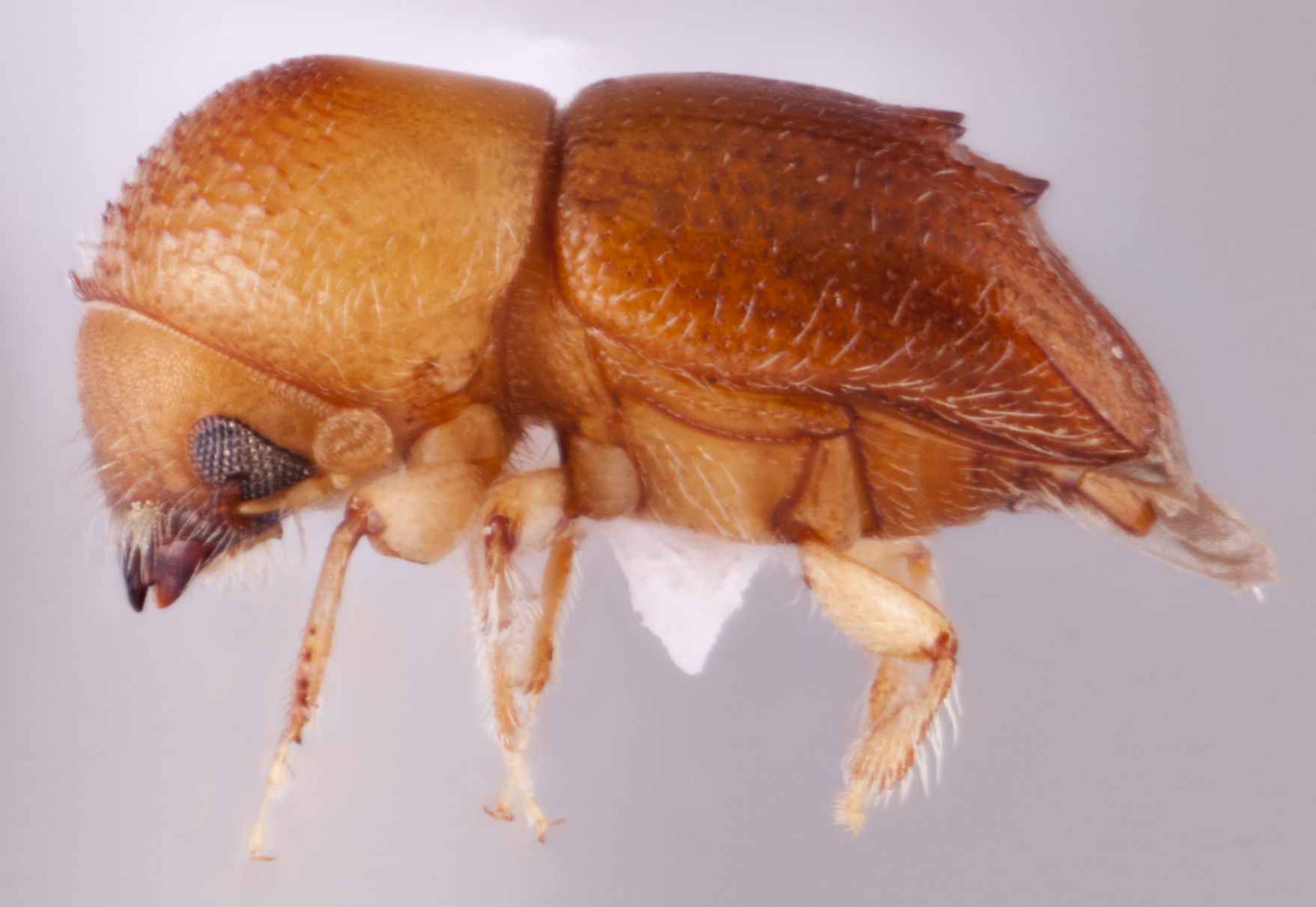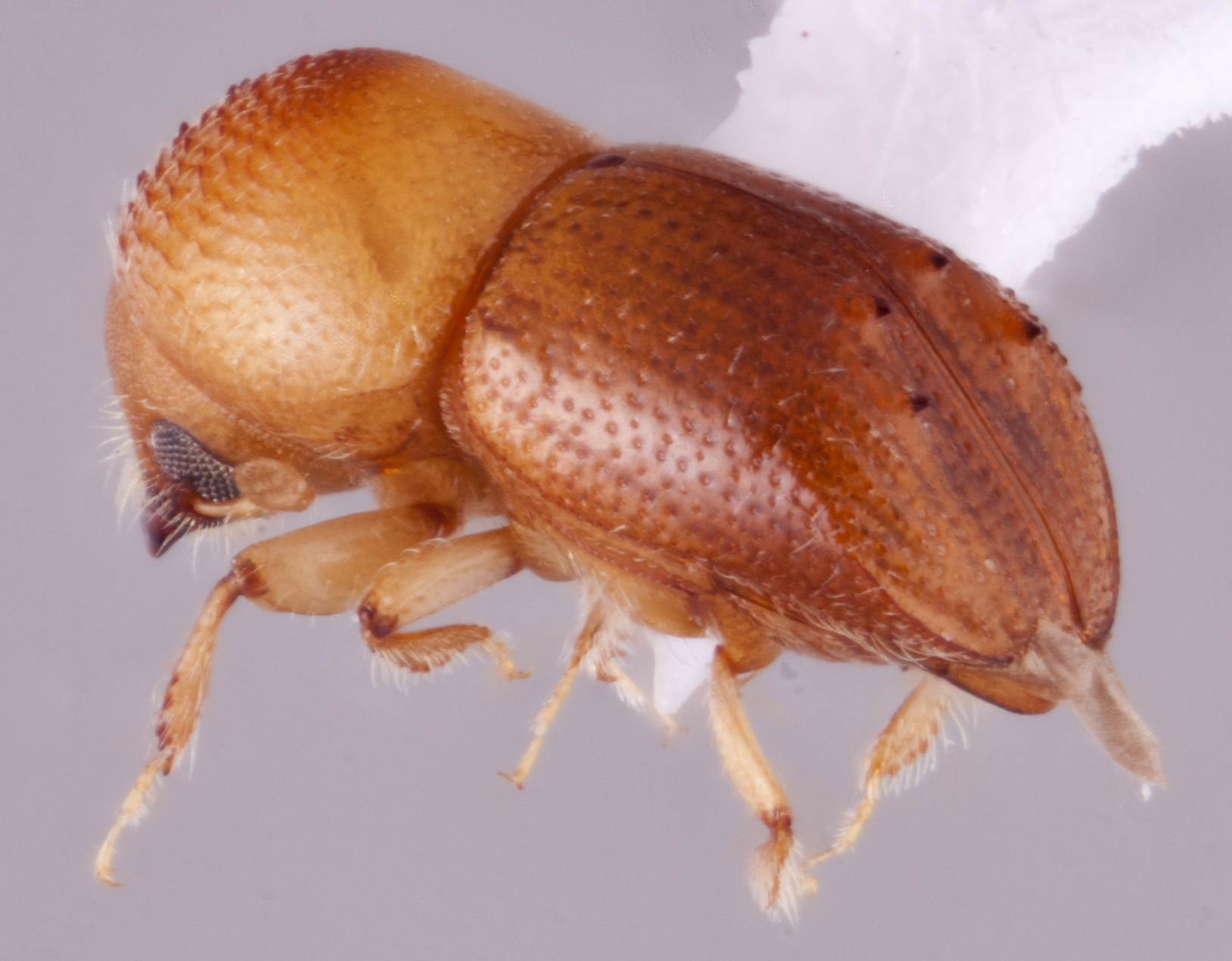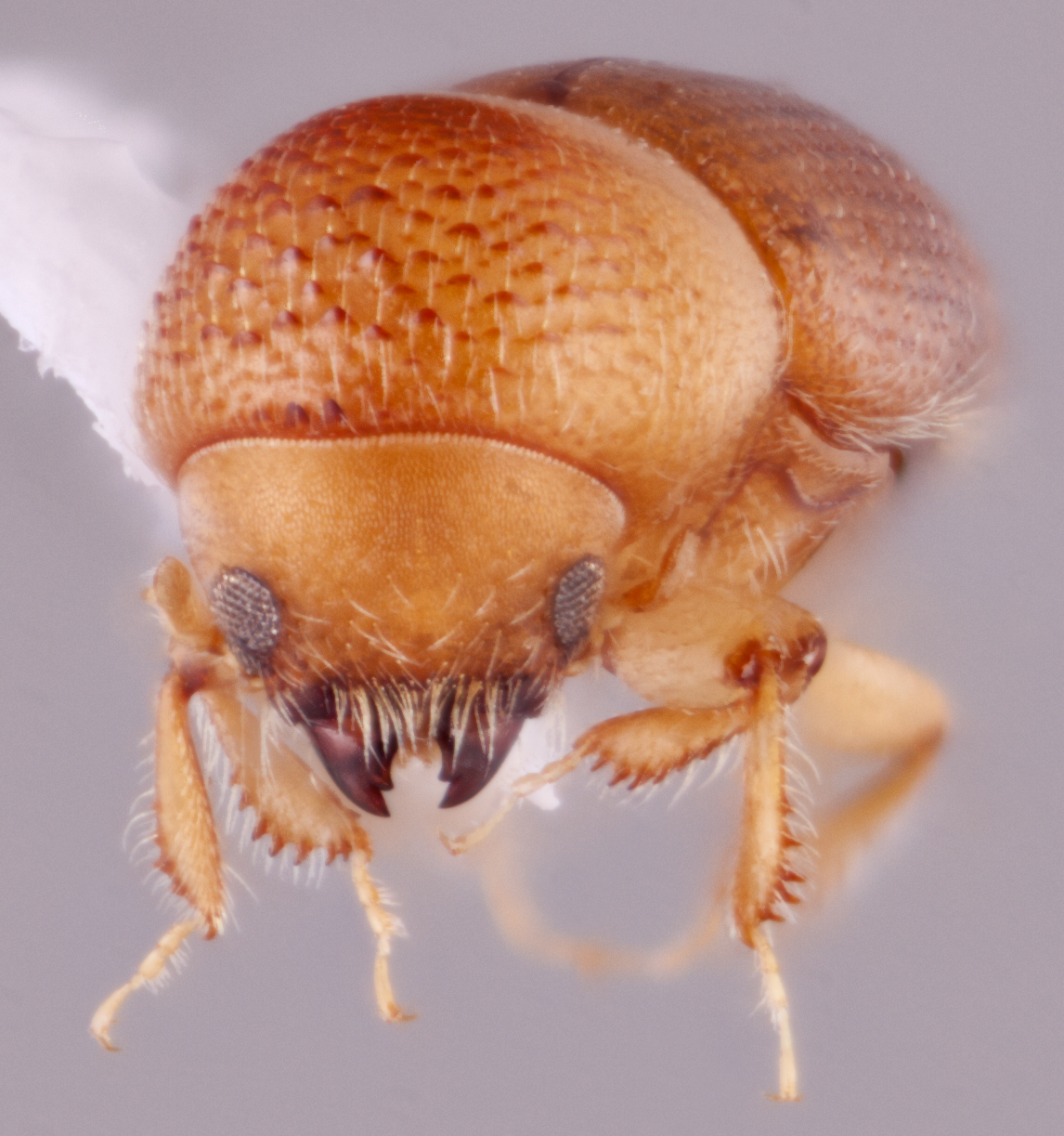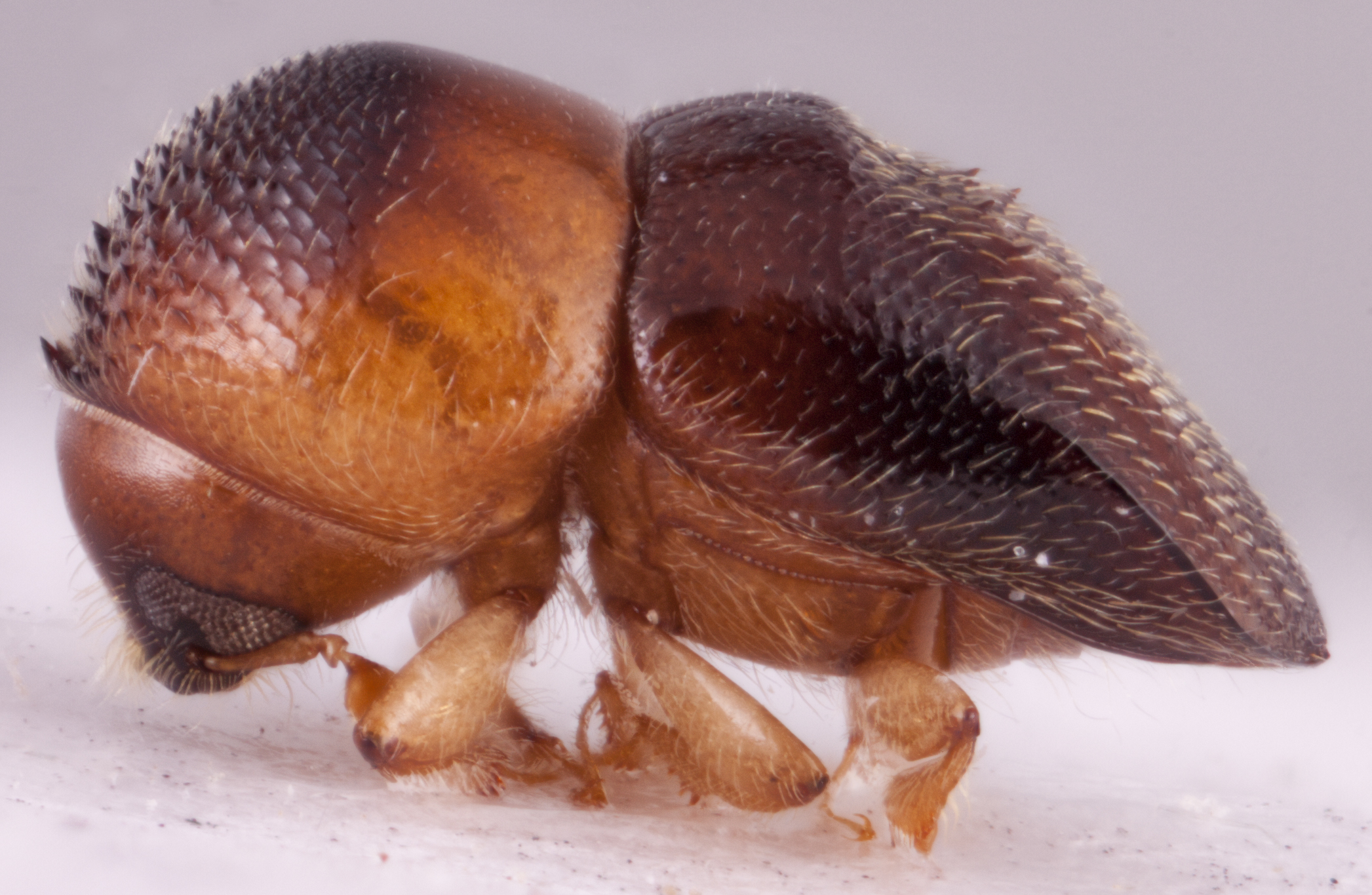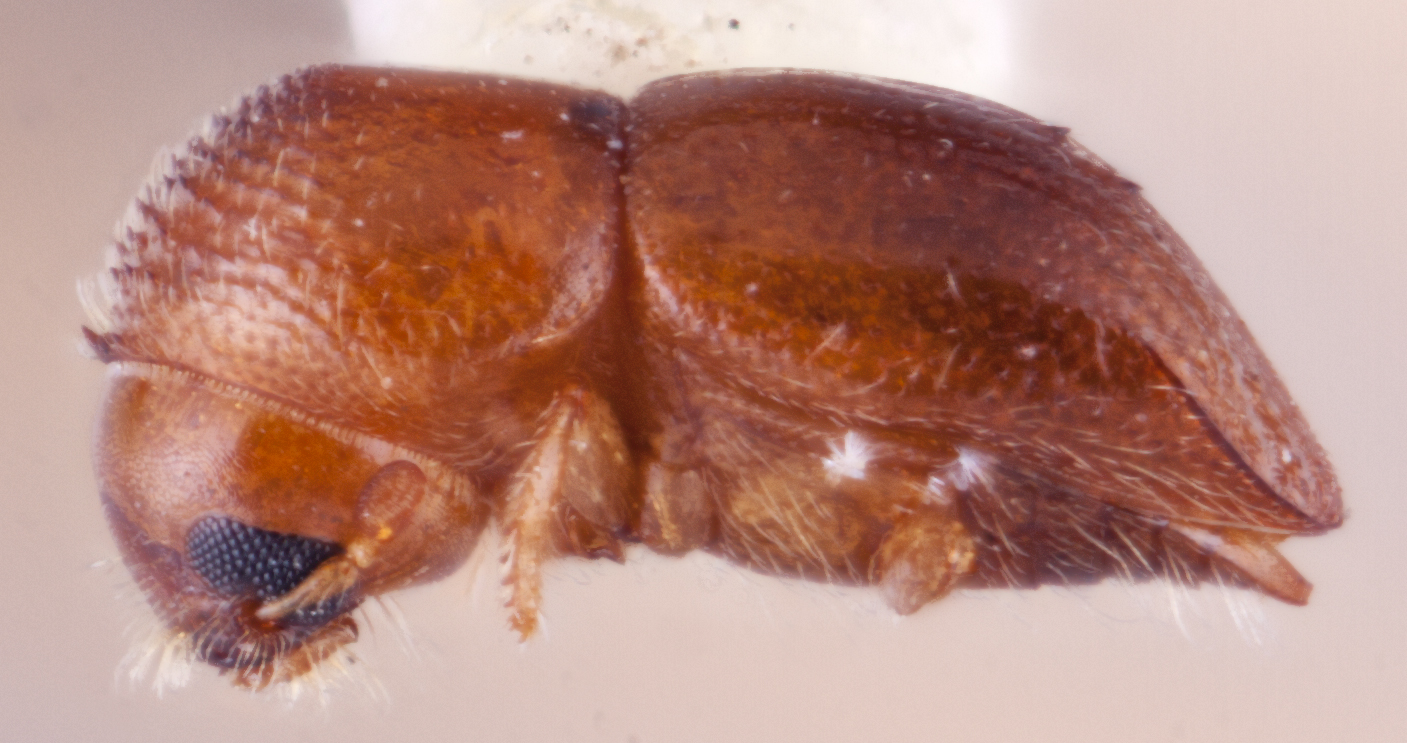Diuncus
|
Diuncus haberkorni; R.K. Osborn |
|
Diuncus haberkorni; R.K. Osborn |
|
Diuncus haberkorni; R.K. Osborn |
|
Diuncus haberkorni; R.K. Osborn |
|
Diuncus javanus; R.K. Osborn |
|
Diuncus quadrispinulosus; R.K. Osborn |
Taxonomy
Diuncus Hulcr and Cognato, 2009: 28.
Diagnosis
Small to moderately sized (1.5−3.0 mm long) stout species (1.33−2.78 times as long as wide). Diuncus species can be recognized by the antennalantennal:
pertaining to the antennae
club obliquely truncateobliquely truncate:
nearly truncate but rounded not flat in lateral view
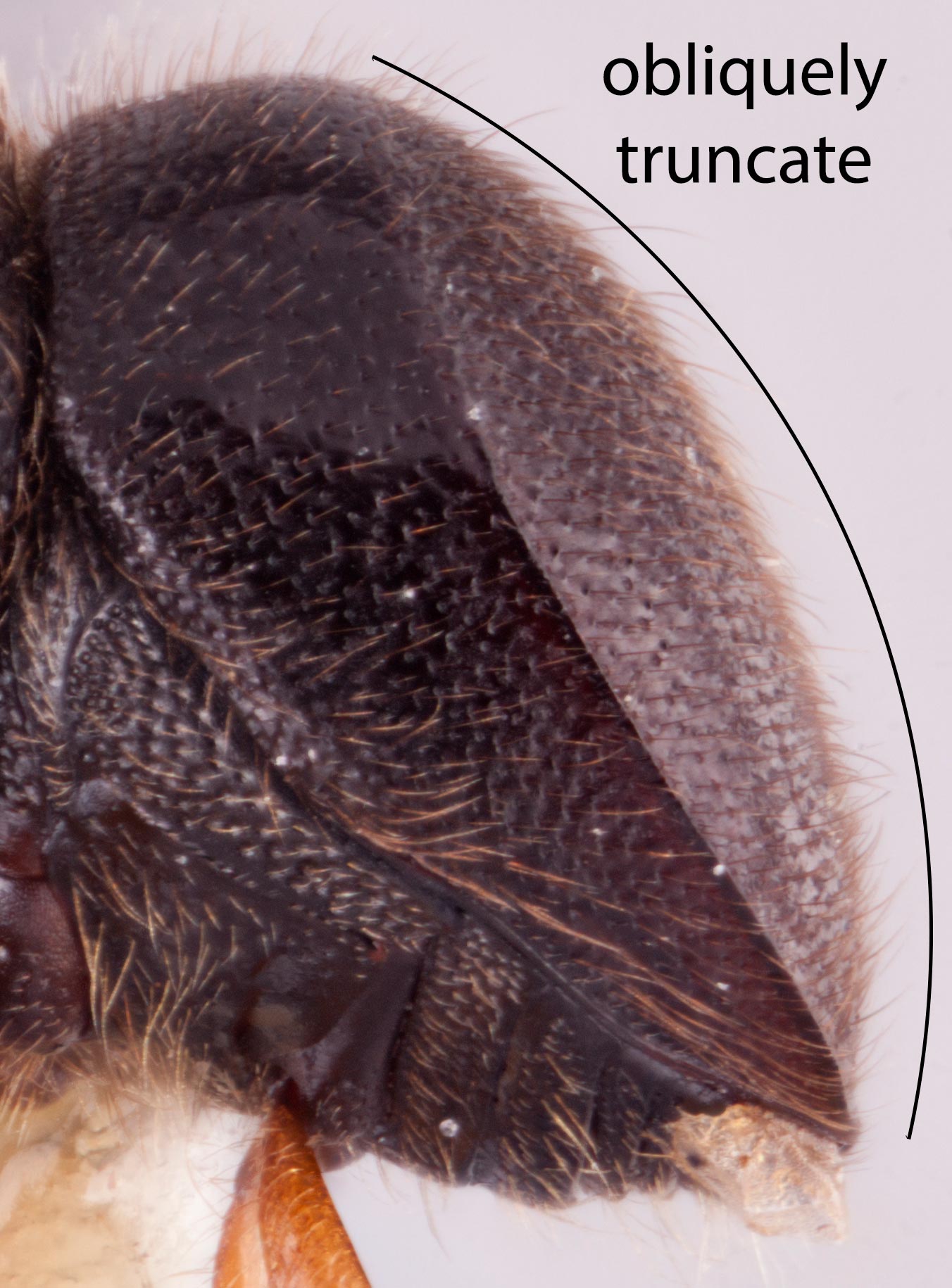 , segment 1 corenous and dominant on both sides (type 1); pronotum stout, with 4−6 serrationsserration:
, segment 1 corenous and dominant on both sides (type 1); pronotum stout, with 4−6 serrationsserration:
row of asperities; a saw-like structure  on anterioranterior:
on anterioranterior:
the front or forward; opposite of posterior margin; pronotum from laterallateral:
margin; pronotum from laterallateral:
pertaining to the side
 view rounded, robust (type 5), from dorsaldorsal:
view rounded, robust (type 5), from dorsaldorsal:
of or relating to the upper surface; opposite of ventral
 view rounded (type 1); declivity flat, broad, margins broadened and distinctly carinate; declivital basebase:
view rounded (type 1); declivity flat, broad, margins broadened and distinctly carinate; declivital basebase:
point or edge closest to the body; opposite of apex often armed with 1−2 pairs of denticles; protibia obliquely triangular, with 3−5 large denticlesdenticle:
often armed with 1−2 pairs of denticles; protibia obliquely triangular, with 3−5 large denticlesdenticle:
a small tooth, the sides of which are equal and the tip is above the middle of the base , denticlesdenticle:
, denticlesdenticle:
a small tooth, the sides of which are equal and the tip is above the middle of the base distinctly longer than wide; scutellum visible and flush with the elytraelytron:
distinctly longer than wide; scutellum visible and flush with the elytraelytron:
the two sclerotized forewings of beetles that protect and cover the flight wings
, mycangial tufts absent; and contiguous procoxae.
May be confused with
Ancipitis, Leptoxyleborus, and Xylosandrus
Distribution
found in tropical Asia and Oceania, rare in Africa
Gallery system
The gallery systems in Diuncus vary depending on the species and the size of the breeding material. There may be an entrance tunnel leading to a terminal brood chamber in the longitudinal plane (D. ciliatoformis); the gallery may branch in three dimensions and either have very irregular brood chambers (D. mucronatus), or lack brood chambers (D. javanus); in small stems, there are longitudinal branches in the centre of the stem (D. haberkorni).
Remarks
The species of Diuncus are usually mycocleptic, making use of the ambrosia fungi of other ambrosia beetles, and lack mycangiamycangia:
structures used to carry fungal symbionts; highly morphologically variable
 (Hulcr and Cognato 2010bHulcr and Cognato 2010b:
(Hulcr and Cognato 2010bHulcr and Cognato 2010b:
Hulcr J, Cognato AI. 2010b. Repeated evolution of theft in fungus farming ambrosia beetles. Evolution 64: 3205-3212. https://doi.org/10.1111/j.1558-5646.2010.01055.x). However, some species also occur alone (Hulcr and Cognato 2009Hulcr and Cognato 2009:
Hulcr J, Cognato AI. 2009. Three new genera of Oriental Xyleborini (Coleoptera: Curculionidae: Scolytinae). Zootaxa 2204: 19-36. https://doi.org/10.11646/zootaxa.2204.1.2).

